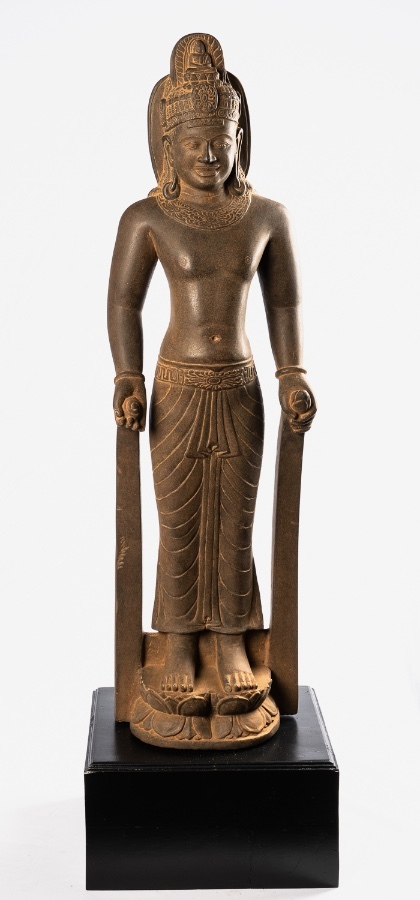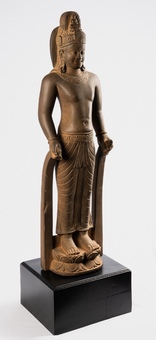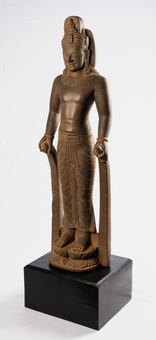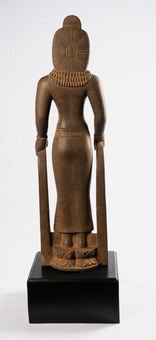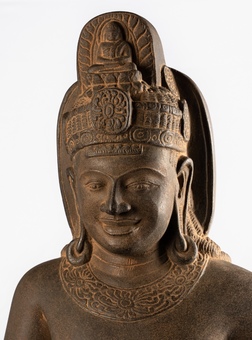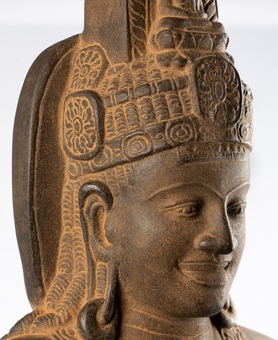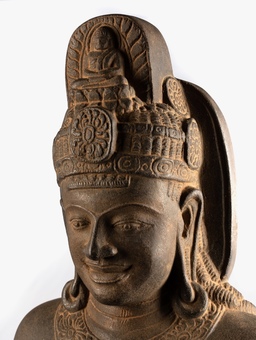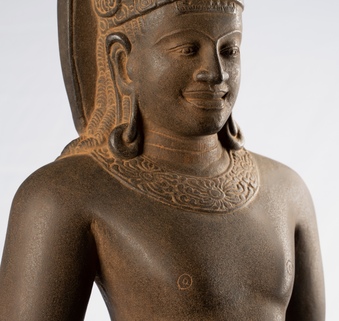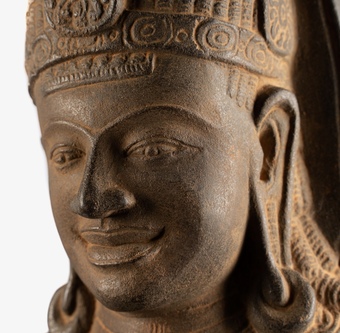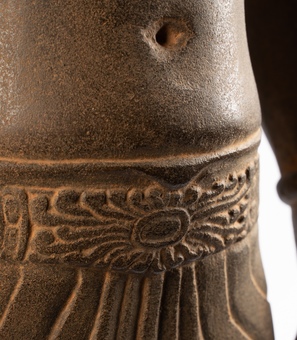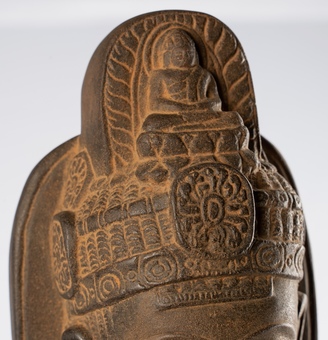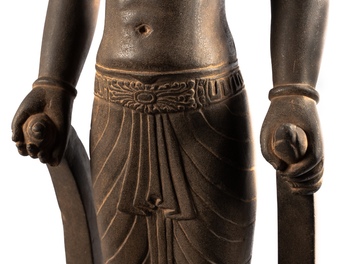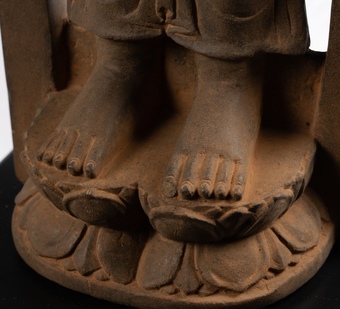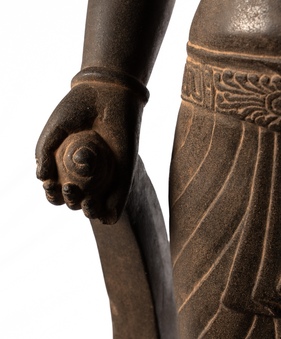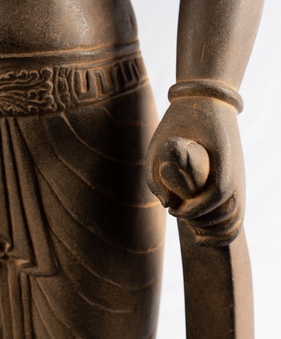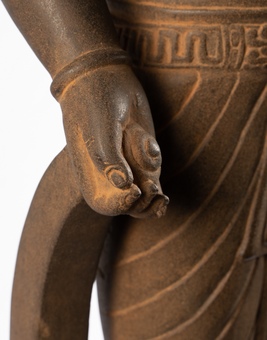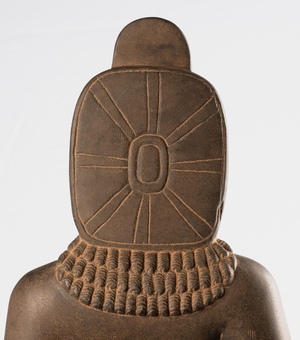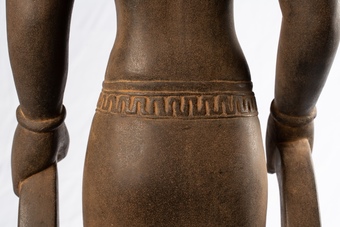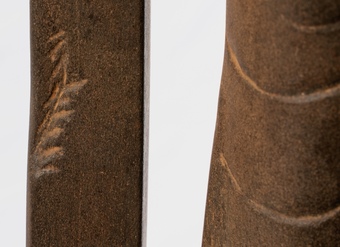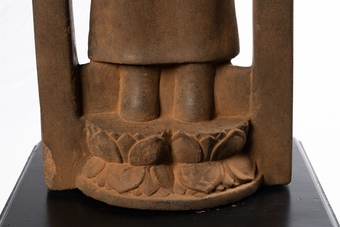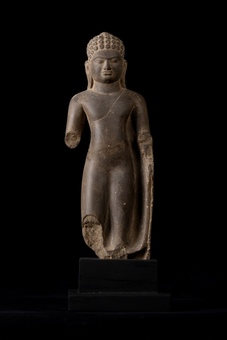Antique Phnom Da Style Stone Guimet Museum Bodhisattva Avalokiteshvara Stele Compassion - 101cm/40"
Measures – (Height) 101cm/40”
An antique Phnom Da style Bodhisattva Avalokiteshvara statue, the Bodhisatva of Compassion. Bodhisattva are beings who have gained enlightenment but postpone their ascension to nirvana to help others achieve the blessed state.
A similiar sculpture to this piece can be found in the preeminent museum of Southeast Asian Art - Musée National des Arts Asiatiques - Guimet, Paris (MA5063).
In his classic work 'Lost Kingdoms' John Guy states of a similar piece 'arguably the most beautiful image of the Buddhist embodiment of compassion from all of Southeast Asia'.
The saviour Avalokiteshvara stands on a pair of lotus blooms, his eyes downcasts as he extends grace to devotees. He wears a pleated waistcloth and an elaborate diadem with the Amit?bha Buddha prominently displayed. His head is framed by an elliptical nimbus (mukhamandala) that extends upward to form the flaming shrine of the meditating Amit?bha Buddha, seated atop a lotus throne on tiered locks of hair (jat?mukuta). The nimbus is otherwise undecorated on the front but has a radiating pattern on the reverse, with two registers of ringlets of hair extending to the shoulders. Both hands are lowered, the left holding a lotus bud, evoking Padmap?ni, the lotus-bearer form of Avalokiteshvara; the other holds what was likely intended to represent the round neck of an ascetic's water vessel (kamandula).
Stylistically, this masterpiece relates to the school of sculpture associated with the pre-Angkorian centre of Phnom Da, southern Cambodia.
Avalokiteshvara is stood in a slightly flexed position, cascading locks of hair, and patterning of the torque and belt. The waist cloth is secured by a detailed belt with jewels set amid vegetal patterns, a design repeated in the torque. Both are intended to evoke the gold jewellery of the period and share the vocabulary of the central Cambodian Prei Kmeng style of the second half of the seventh century. The end of the skirt has a sprayed and pleated fishtail design, visible below the belt. Gracefully, sweeping folds extend the full length of the robe, defining the contours of the body, a treatment developed most fully in the Phnom Da style.
The figure is partially liberated from the block of stone; the upper half is worked fully in the round, with openwork arms, but the hands are still supported by solid shafts of stone that extend to the base, and the legs remain embedded in the block.
In all, these characteristics place the sculpture in the late seventh- or early eighth century setting and suggest a cultural sharing with the workshops of the Phnom Da school.
The statue is carved in the round, rather than as a relief on a stela. From this, we can infer that Khmer sculptors would have desired their artwork to be viewed from all sides and thus placed in the centre of temples rather than against a wall. While this artwork was religious - priests supervised its execution - its realism is unmistakable.
PLEASE NOTE - Many more images of this stunning piece are available.
Provenance: New York, USA Collection. All items are guaranteed to be as described. A Certificate of Authenticity will accompany all purchases upon request.
SATISFACTION GUARANTEE - We have been offering SE Asian Art for many years and are proud of the reputation we have developed for fair and honest listings. However, if for any reason, whatsoever, you are unhappy with your purchase please just let us know and we will provide a full refund. We want you to be 100% happy with your purchase.
Antiques.co.uk Ref: KFDD9DHE
- Materials:
- Sandstone
- Height (cm):
- 101
Price: £14,995.00
Please note that this price may NOT include delivery charges which the seller may charge extra for.





